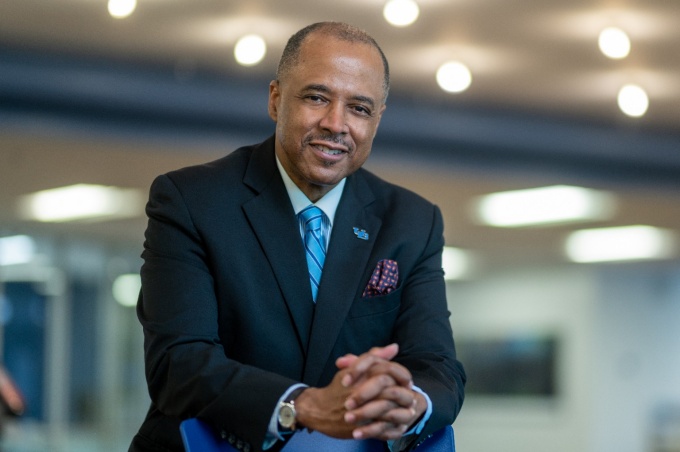Q&A with Dean Keith A. Alford

In addition to the dean’s letter in this Fall 2021 issue, here is a brief Q&A to share snippets of the “conversation” that will characterize his work with us and our school community. Contributing editor Jana Eisenberg interviewed him for Mosaics; answers have been edited for length.
What else would you like people to know about you?
Keith A. Alford: I appreciate and value interaction, so that I can fully embraced the lived experience of “the other.” That is how we get to know each other—cross-culturally and where we find commonality. Dialogue is about growth—gaining and learning from each other once we open ourselves with empathy, authenticity, and patience. Dialogue offers the opportunity for moments of realization, that proverbial “aha!”.
What has impressed you in your first semester here?
KAA: The first piece that comes to mind is the trauma-informed, human rights perspective that permeates our curriculum and daily practices. This is an impressive strength of our program. I fully support our emphasis on socially embedding both faculty and students’ incredible research into the community. Our commitment is to make sure that, beyond the actual research methodology, we are doing positive work with the findings in our local area, as well as in the broader society.
Why do you feel that the school’s Racial Justice Network (RJN) is necessary now?
KAA: As I’ve said, we live in transformative times, times that demand responses in the moment. When we can be proactive, we should. Real-time experiences and thoughts associated with racial equity are critical; people need and want solutions and answers.
Why is the decentralized nature of the RJN appropriate?
KAA: It provides a constructive and critical lens for looking at racial equity, in a way that we probably have not done before. It opens the door for our appreciation of contextual reality; race is critical in everything and anything we do. The network model offers anyone who wants to take an action—to form what the network calls a “node”—the power to express themselves. It serves the school well; transformation can be more difficult with bureaucratic layers; it’s not impossible, but it can take longer. The cooperative network model provides real-time experience, as well as feedback—the ability to share, connect, and process; hence, real-time change.